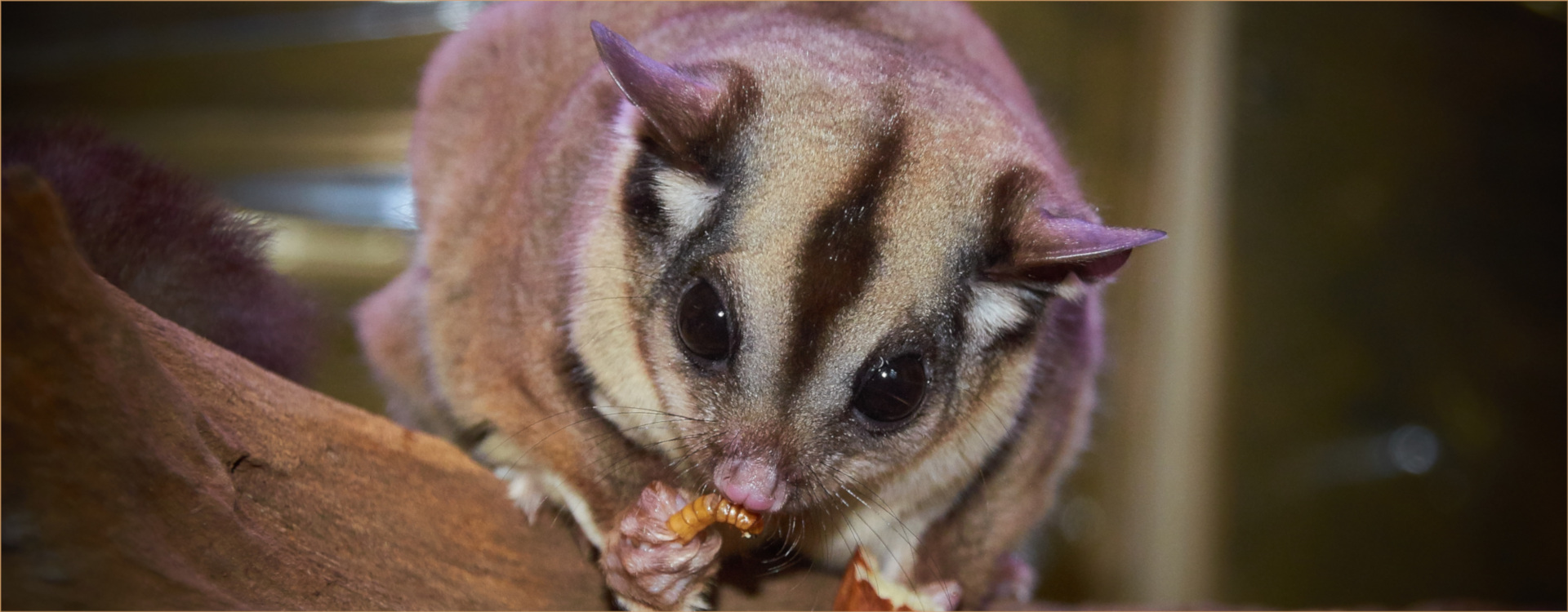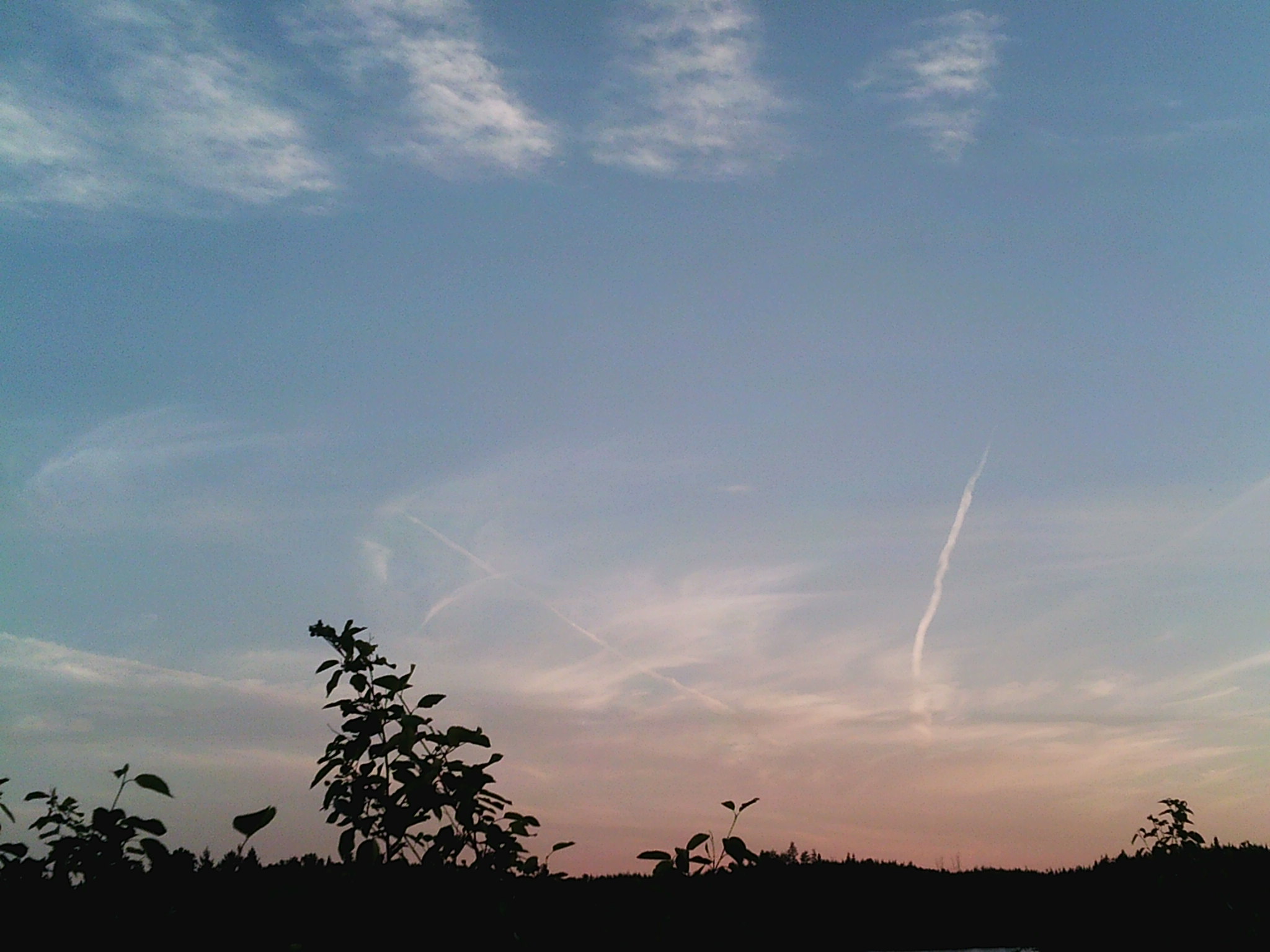Kava Gliding Rat
A large-eyed, shelled crustacean-mammal
The Kava leaves, the source of food for the ecosystem, are dozens of meters up, blocking almost all sunlight from the lower levels. The Brown Halora adapted to the threat of falling into the dark swamps below by getting gripping appendages on their wings. The Kava Gliding Rat adapted in the opposite direction, getting from tree to tree more easily with their gliding membranes.The Kava Gliding Rat, a denizen of the kava marshes in Clara, is akin to a sugar glider on Earth. It is a primary consumer, consuming the leaves of the kava tree, as well as any vegetation growing on the massive turrim trees that puncture the kava canopy in certain places. It is a natural enemy of the sentient species, the Brown Halora, due to it wreaking havoc on some of the foods they eat, as well as a food source, supplementing the protein from fish.– Analyst Drone Notes
Basic Information
Anatomy
The animal is designed much like a sugar glider on Earth. However, there are several key differences that distinguish it from sugar gliders:
- First, the eyes of the animal are larger, to help it distinguish the predators that may kill it and the ears are also larger, and often are perked up.
- Second, the body of the animal is longer, and thinner, so that more surface area may be covered by the membranes in flight.
- The animal has six limbs, instead of four, and a shorter, stronger prehensile tail.
- Finally, the rat carries a large lightweight chitin shell on its back, an vestigal structure that is borrowed from the crustacean ancestors they had.
Genetics and Reproduction
Hold on, these critters? These? Your worst enemy are these cute, big-eyed, long-eared, smiling crustacean?The species reproduces sexually, with a complex mating ritual. The female, in her protective nest on the kava plant or turrim tree, retreats under her shell, and sees if the male can pull her out from under her shell. If he can, he is evolutionarily fit, and she mates with him. After mating, the female has a gestation period of seventeen days, and produces litters of small, shelled baby gilders (usually one or two per litter). The babies cling to the underside of her shell, and she feeds them for over five months with her breasts before they mature and leave the nest, to grow up on their own.– Linguist Bai, to Halorin Elder Gloria
Additional Information
Domestication
I have grown old... my whiskers have fallen out, and yet still the bird caring over me remains in the full flush of youth. They live tens of thousands of days, and to them we are just short-lived attachments. And yet, some of them bond with us for a lifetime.Some cultures have domesticated the animal as a pet, due to its acute sense of sight and hearing. They often use the animal as a gatekeeper to its house. The animals are very loyal, and stay that way up to their death if properly domesticated.– A famous Halora poem about the minds of their pets
Geographic Origin and Distribution
In the bamboo forests west of the Thousand Peaks Range in Zentland.
Perception and Sensory Capabilities
The rat, in captivity, can detect the beating of a Halora wing from fifty meters, and detect a Halora bird from over three hundred meters. Their sense of smell, however, seems much less developed, just slightly better than the baseline human sense of smell.The animal has an incredibly acute sense of hearing, to help it distinguish the telltale beating of wings of the Brown Halora, which often attempts to approach it from behind to kill it without being seen. Also acute is the rat's sense of vision. As a primary consumer, it is hunted by many things that exist in the jungle of kava plants, and it must be able to see them coming. It is measured that they often have the equivalent of 20/4 vision.– Notes from an Analyst Drone
Scientific Name
Allapsus pestis
Origin/Ancestry
Clara, bamboo forests of Zentland
Lifespan
11-20 years
Conservation Status
Least Concern
Average Weight
140-160 g
Average Length
16-23 cm
Remove these ads. Join the Worldbuilders Guild











Nice article, it is super cute! i especially liked the mating ritual, sounds like a game we played as scouts XD though i'm having a hard time imaging how they'd do it with those tiny arms. The quote had me curious, how exactly would it work as a worst enemy?
They generally breed like... well rats, and therefore get into farms and stuff and start eating all the grain and then you don't have food :P so there's that.